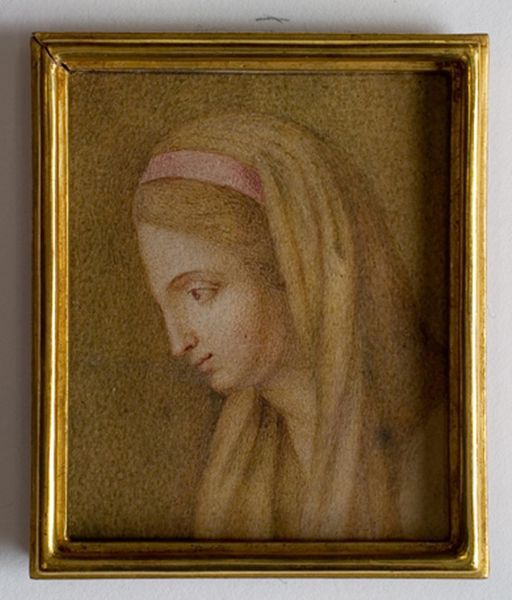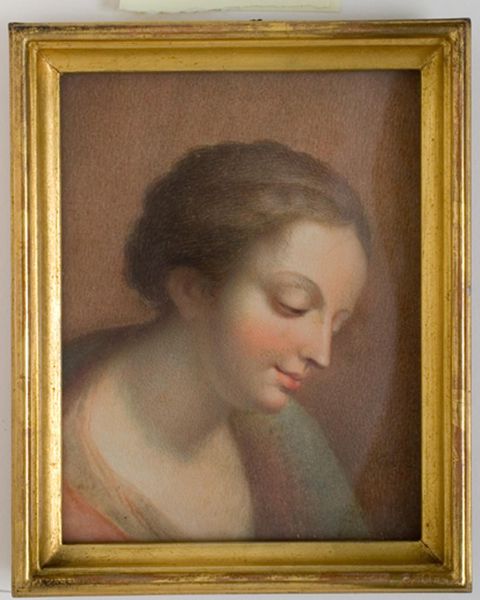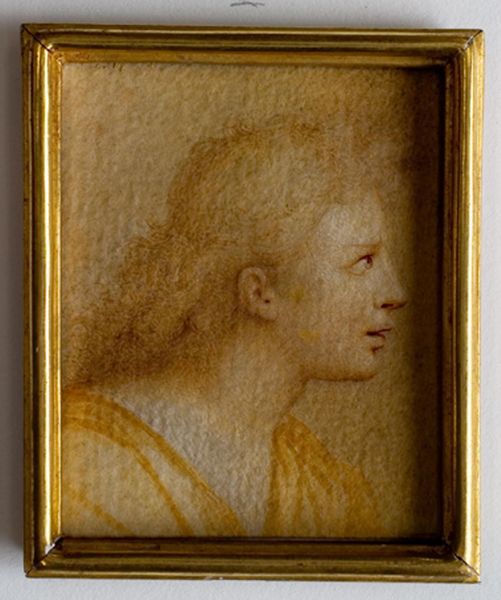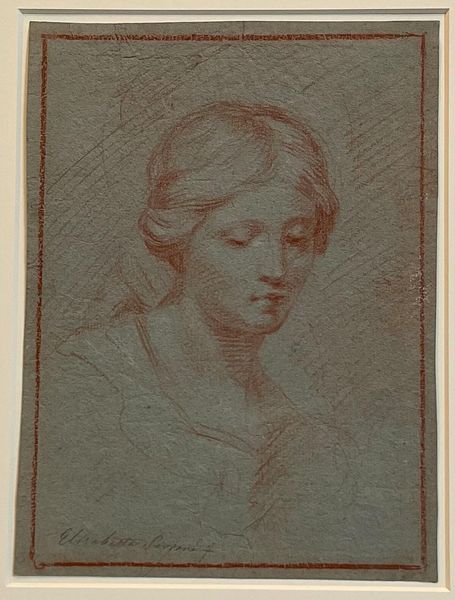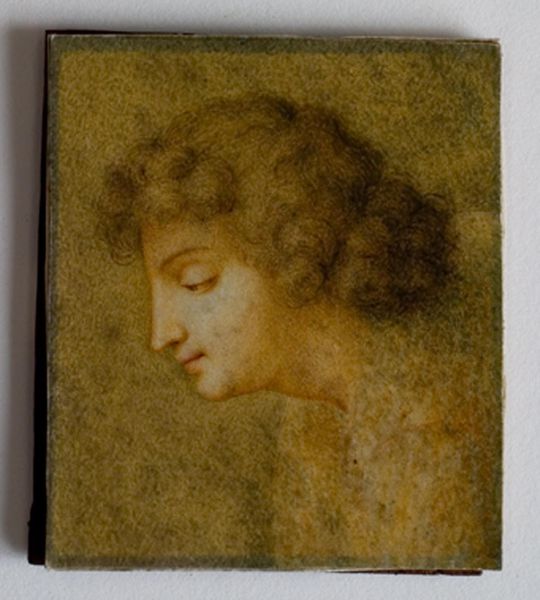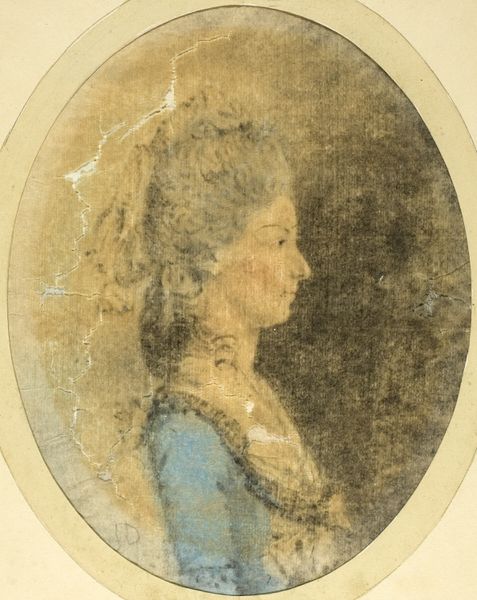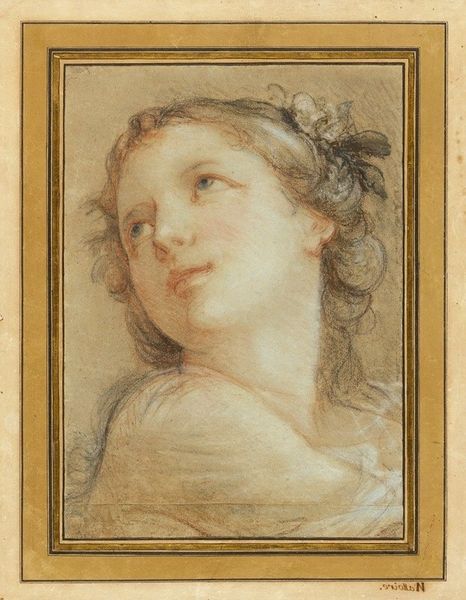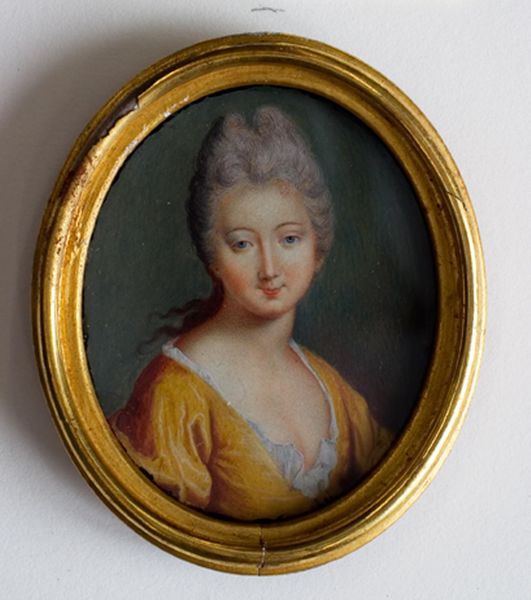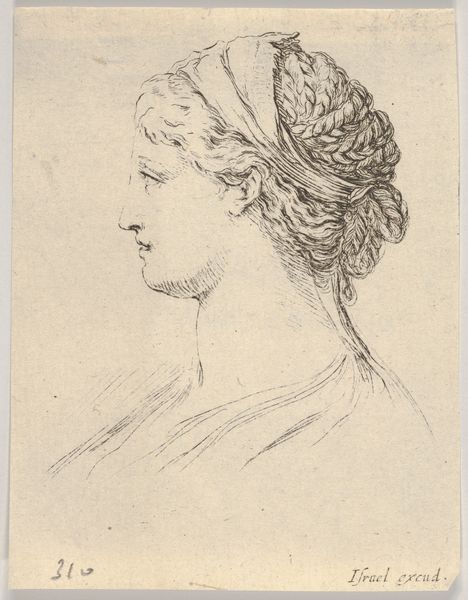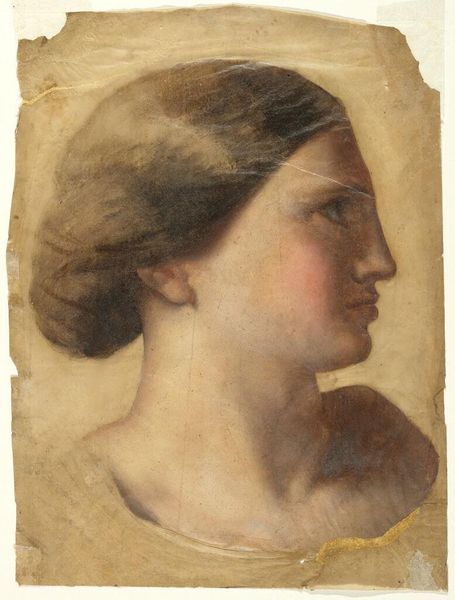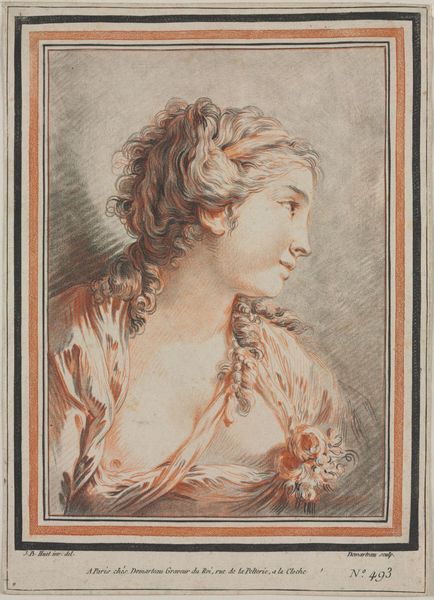
drawing, paper, pencil, pastel
#
portrait
#
drawing
#
self-portrait
#
paper
#
pencil
#
15_18th-century
#
pastel
#
watercolor
Dimensions: 6 cm (height) x 4.8 cm (width) (Netto)
Curator: Let’s turn our attention to "Kvindeligt idealhoved," which translates to "Female Ideal Head," a drawing created between 1726 and 1748. It is currently housed here at the SMK, Statens Museum for Kunst. Editor: It’s captivating; the subtlety of the pastels is what stands out to me right away. The woman depicted seems to be captured in a moment of contemplation. What materials were employed in its construction? Curator: The artist used pencil and pastel on paper to render the image of this unknown female sitter. Her identity has been obscured from history. Editor: Fascinating. So, when we think about the use of pastel, it’s a deliberate choice to create softness and to almost romanticize the subject, to evoke sensuality perhaps? This choice of media surely contributes to our perception of this female sitter. And I'm also keen to consider what might be lost historically when the materials erode over time. Curator: Absolutely. Pastels also allow for corrections and layering which we can identify. In considering 18th century notions of feminine ideals and representations, we see how the lack of explicit detail lends to a sense of generalized beauty, perhaps emphasizing archetypes of womanhood from that time. It raises questions about whose gaze is reflected here and whose standards of beauty are being upheld, particularly the impact on how women perceived themselves in that historical context. Editor: And further, where did the materials come from and who processed them? How much access would Gardelle have had to these materials? If this work attempts to showcase an ideal woman's head, where did the artist work? What labor conditions were like at the time? Curator: Precisely, and what's really interesting is to situate this idealized head within the societal dynamics of the era. Women's roles were quite constrained, but art provided a space for exploring these ideals, albeit often through a male lens, even if there are traces of female artistic authorship or collaboration involved. Editor: Thinking about it, analyzing "Kvindeligt idealhoved" reveals a web of complex relations - production of pastels, modes of making images, historical status of female sitters in Denmark at that time - all these elements coalesce here. It reminds us that the visual pleasure of encountering historical portraits must be constantly negotiated. Curator: Absolutely. Examining these works and considering gender roles encourages a more nuanced appreciation. It pushes us beyond passive observation towards actively engaging with art’s relationship to social justice. Editor: It gives the image a greater voice as well, reminding us to not blindly see pretty images as relics of beauty, but consider their deeper role in shaping gendered relationships throughout history.
Comments
No comments
Be the first to comment and join the conversation on the ultimate creative platform.

